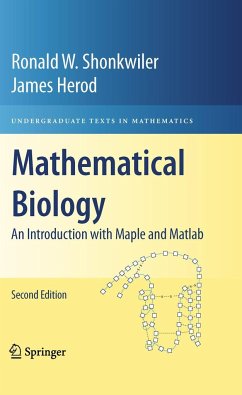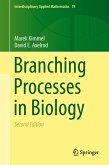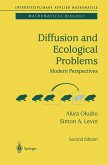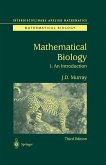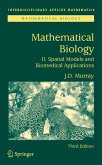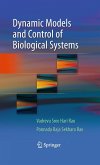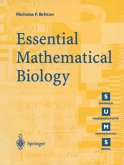This text presents mathematical biology as a field with a unity of its own, rather than only the intrusion of one science into another. It updates an earlier successful edition and greatly expands the concept of the "computer biology laboratory," giving students a general perspective of the field before proceeding to more specialized topics. The book focuses on problems of contemporary interest, such as cancer, genetics, and the rapidly growing field of genomics. It includes new chapters on parasites, cancer, and phylogenetics, along with an introduction to online resources for DNA, protein lookups, and popular pattern matching tools such as BLAST. In addition, the emerging field of algebraic statistics is introduced and its power illustrated in the context of phylogenetics.
A unique feature of the book is the integration of a computer algebra system into the flow of ideas in a supporting but unobtrusive role. Syntax for both the Maple and Matlab systems is provided ina tandem format. The use of a computer algebra system gives the students the opportunity to examine "what if" scenarios, allowing them to investigate biological systems in a way never before possible. For students without access to Maple or Matlab, each topic presented is complete. Graphic visualizations are provided for all mathematical results.
Mathematical Biology includes extensive exercises, problems and examples. A year of calculus with linear algebra is required to understand the material presented. The biology presented proceeds from the study of populations down to the molecular level; no previous coursework in biology is necessary. The book is appropriate for undergraduate and graduate students studying mathematics or biology and for scientists and researchers who wish to study the applications of mathematics and computers in the natural sciences.
A unique feature of the book is the integration of a computer algebra system into the flow of ideas in a supporting but unobtrusive role. Syntax for both the Maple and Matlab systems is provided ina tandem format. The use of a computer algebra system gives the students the opportunity to examine "what if" scenarios, allowing them to investigate biological systems in a way never before possible. For students without access to Maple or Matlab, each topic presented is complete. Graphic visualizations are provided for all mathematical results.
Mathematical Biology includes extensive exercises, problems and examples. A year of calculus with linear algebra is required to understand the material presented. The biology presented proceeds from the study of populations down to the molecular level; no previous coursework in biology is necessary. The book is appropriate for undergraduate and graduate students studying mathematics or biology and for scientists and researchers who wish to study the applications of mathematics and computers in the natural sciences.
From the reviews of the second edition:
"This is a well conceived introduction into some of the most important fields of biomathematics. It aims mainly at undergraduates in mathematics but will be suitable for students who have passed a one-year course of calculus and some linear algebra. ... Each chapter starts with a biological motivation and an introduction of the basic biology required." (R. Bürger, Monatshefte für Mathematik, Vol. 169 (2), February, 2013)
"This is a well conceived introduction into some of the most important fields of biomathematics. It aims mainly at undergraduates in mathematics but will be suitable for students who have passed a one-year course of calculus and some linear algebra. ... Each chapter starts with a biological motivation and an introduction of the basic biology required." (R. Bürger, Monatshefte für Mathematik, Vol. 169 (2), February, 2013)

